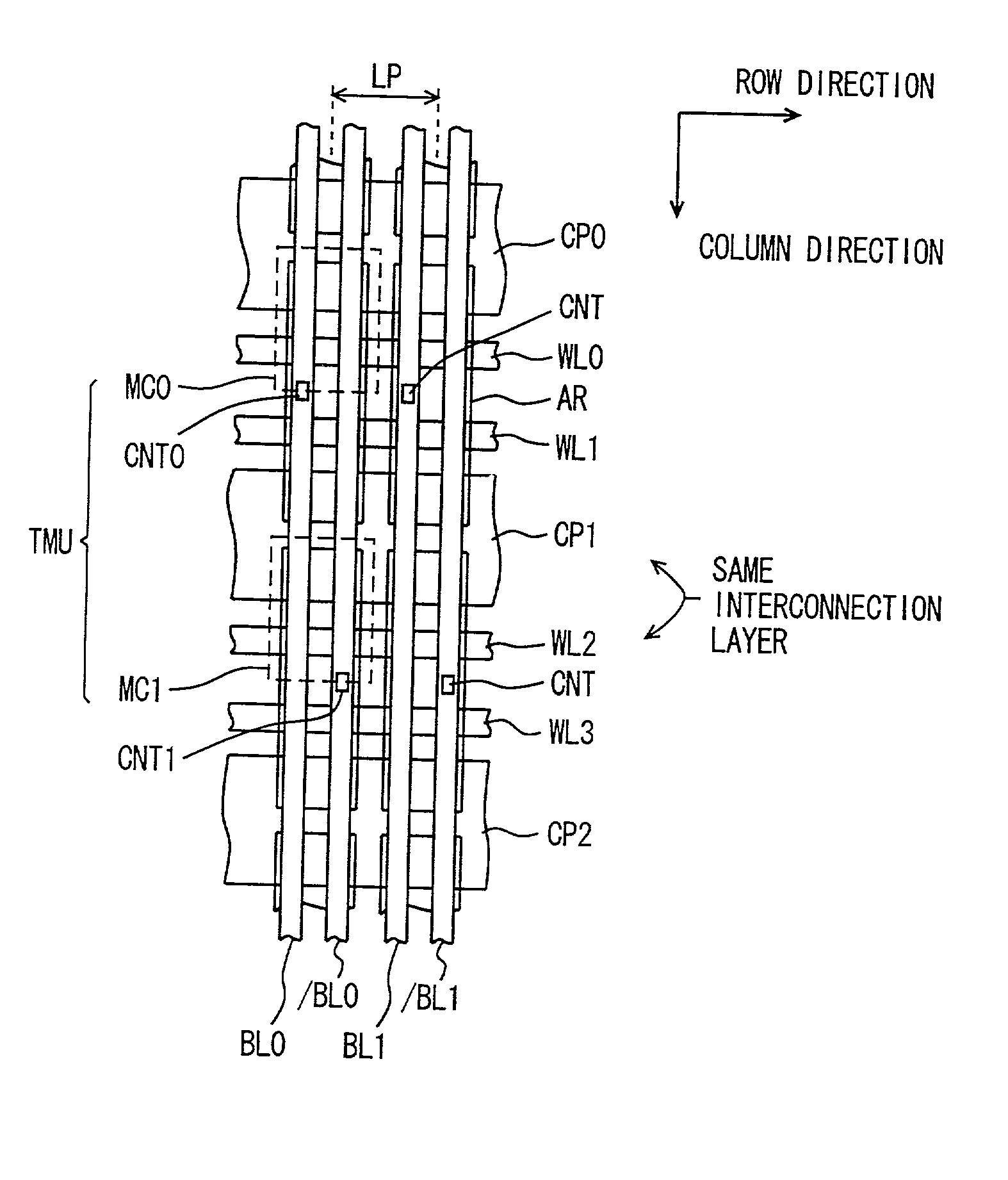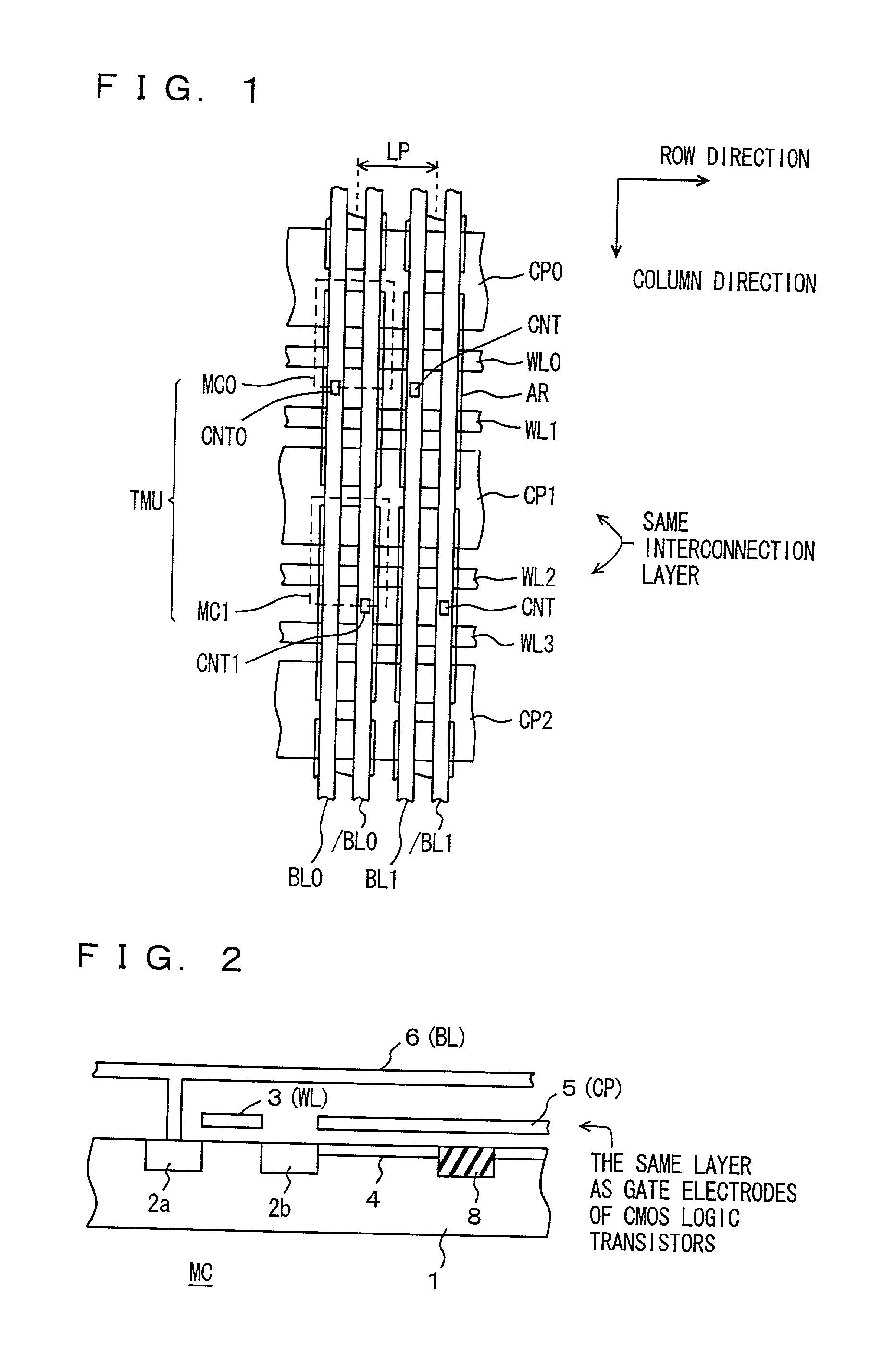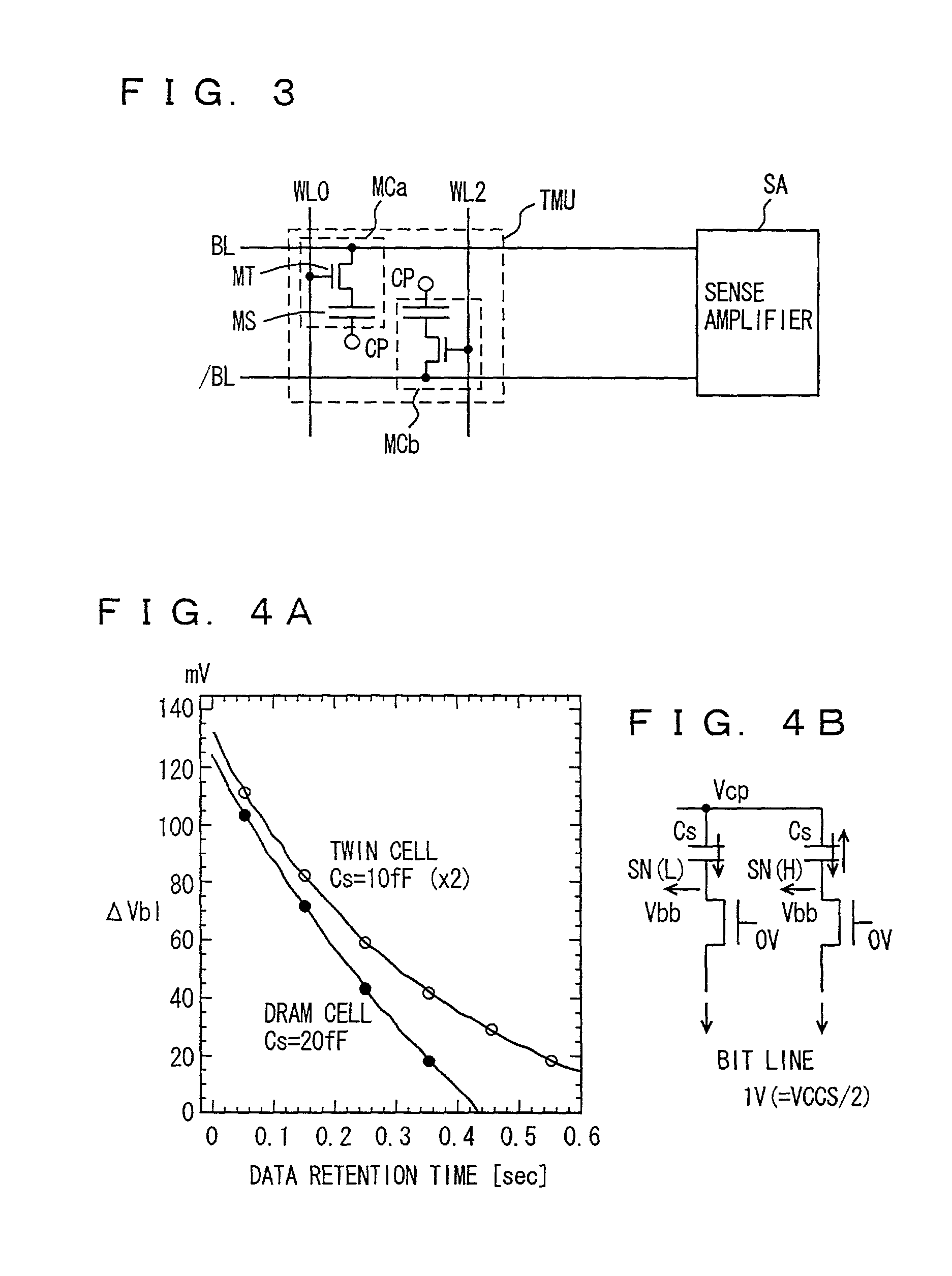Semiconductor memory device
a memory device and semiconductor technology, applied in semiconductor devices, digital storage, instruments, etc., can solve the problems of increasing chip cost, increasing manufacturing steps, and large chip siz
- Summary
- Abstract
- Description
- Claims
- Application Information
AI Technical Summary
Benefits of technology
Problems solved by technology
Method used
Image
Examples
third embodiment
[0227] FIG. 23 is a diagram schematically showing the configuration of a modification of the present invention. In FIG. 23, a bank A sense amplifier band SABA is arranged at one side, in the column direction, of a row block RBA, and a bank B sense amplifier SABB is arranged between row blocks RBA and RBB. Memory cells arranged at the crossing of a bit line pair BLPa and a sub word line SWLA in row block RBA are connected to a sense amplifier in bank A sense amplifier band SABA. On the other hand, in row block RBA, data in memory cells arranged corresponding to the crossing of a sub word line SWLB and a bit line pair BLPb are sensed and amplified by bank B sense amplifier band SABB.
[0228] A local control circuit 85 is provided to bank A sense amplifier band SABA, and a local control circuit 86 is provided to bank B sense amplifier band SABB. A latch bank designating signal BSLTA and a latch block selecting signal BSA specifying memory blocks sharing bank A sense amplifier band SABA a...
fourth embodiment
[0233] [Fourth Embodiment]
[0234] FIG. 24 is a diagram schematically showing a layout of a memory cell array according to a fourth embodiment of the present invention. In FIG. 24, active areas AR are arranged in alignment along the column direction. In each active area AR, 2-bit memory cells adjacent in the column direction are formed similarly to the third embodiment. Bit lines BL0 and / BL0 are arranged along the column direction in alignment with active areas AR. Therefore, one bit line is arranged at the pitch of the memory cells in the row direction. Thus, the pitch condition on the bit lines can be relaxed.
[0235] A memory cell MC0 is connected to a bit line BL0 through a contact CNT, and a memory cell MC2 is connected to a bit line / BL0 through a contact. When a word line WL1 is selected, data in memory cells MC0 and MC2 are read out onto bit lines BL0 and / BL0, respectively. Accordingly, in the case that data are stored in the twin cell mode, a twin cell unit is provided by mem...
fifth embodiment
[0242] [Fifth Embodiment]
[0243] FIG. 27 is a diagram schematically showing a layout of an array section of a semiconductor memory device according to a fifth embodiment of the present invention. In FIG. 27, active areas AR are arranged extending continuously in the column direction. With two bit lines provided for each of these active areas AR, the bit lines are arranged extending in the column direction in alignment with active areas AR.
[0244] Similarly to the above-mentioned embodiments, cell plate electrode lines CP0-CP2 and word lines WL are formed in the same interconnection layer in the row direction.
[0245] In the layout illustrated in FIG. 27, active areas AR are continuously extends in the column direction, and DRAM cells sharing a cell plate electrode line share a capacitor. Thus, each of unit memory cells MC4 and MC5 is formed in an area surrounded by contacts at both sides of cell plate electrode CP1. At both sides of each of the contacts, word lines WL0b and WL1a, or wor...
PUM
 Login to View More
Login to View More Abstract
Description
Claims
Application Information
 Login to View More
Login to View More - R&D
- Intellectual Property
- Life Sciences
- Materials
- Tech Scout
- Unparalleled Data Quality
- Higher Quality Content
- 60% Fewer Hallucinations
Browse by: Latest US Patents, China's latest patents, Technical Efficacy Thesaurus, Application Domain, Technology Topic, Popular Technical Reports.
© 2025 PatSnap. All rights reserved.Legal|Privacy policy|Modern Slavery Act Transparency Statement|Sitemap|About US| Contact US: help@patsnap.com



